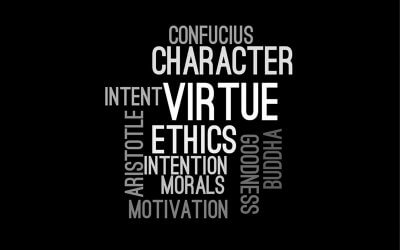Discover how understanding the limitations of averages and embracing probabilistic thinking can improve decision-making and risk management in business.

Ideation! Harder Than It Sounds
Ideation is key in an organization as it faces the challenges of a changing environment. What new ideas, thoughts, understanding, and logic can we bring to the situation before us. This may sound easy, but I have found that when challenged to do so, the thought process slows down very quickly, and after a few ideas have been thrown out and rejected, a form of hopelessness takes over. Face Idea Generation is Hard!
So how to solve this problem?
Working with some teams recently, I have come across the following system, which, while not perfect, helps get closer to what we want to achieve. For example, let’s say the topic is “Grow repeat business.”
100 Ideas, No Less
When starting the process with your team, the first rule is that we will not stop with ideation until we have at least 100 ideas on the board. Not only do we need 100 ideas, but no one is allowed to criticize, demean, promote, or challenge any idea until the 100 are there. This rule’s logic is to stop ideas from being shut down by some of the dominant participants. It is hard to get 100 ideas up on the board, and we progress through them, they get crazier, but that is sometimes where the gems lie. So, following our example, we could have the following ideas:
- Create a membership club
- Offer discounts to repeat customers.
- Provide value behind a paywall for member customers
- Offer bundling
- Offer easy returns, e.g., Zappos.
- Provide special shopping events for repeat customers or members
- Offer suggestions to customers based on what they have purchased.
- Free shipping for members
- Special shopping days for members only
- Early access to new products for members or repeat customers
- Send you products that we believe you want and if you don’t return them then charge for them.
As can be seen from the above, many of these ideas are common, and we have seen them with Amazon and others. However, at one time, they were all new. Also, the last one, someone might think is “crazy,” but it doesn’t matter; it is still an idea to be put down.
Mind Map
Once you’re over 100 and there are no more ideas, time to organize. If there are still ideas at 100, don’t stop. I find organizing through Mind Mapping the best. For those of you who haven’t done Mind Mapping, take your ideas and organize them into “topics.” Elaborate on those by creating sub-topics and use short phrases or single words to identify them. Thus, once done, your 100+ ideas are organized into subtopics within topics, so it is easier to look at what each is seeking to achieve. In some cases, the ideas are just variations on prior ideas to be lumped into one. So, again looking at the ideas above, we could organize them as follows:
| Membership | Ease of Use | Promotions |
| Create a club | Offer easy returns | Special shopping events |
| Provide additional value for members | Offer bundling | Discounts |
| Special shopping events for members | Offer suggestions to customers based on prior purchases | Special shopping days |
| Free shipping for members | Free shipping for everyone | |
| Early access to new products for members | Early access to new products for prior customers | |
| Send products and customer decides if they want them. |
10% AND ?
Once we have divided everything into our subtopics, then we go through them one by one. Each person has to identify at least 10 percent of what they like about any idea and then add to it. The next person builds on the last person’s statement, again identifying at least 10% they like and then adding to it. This ensures that nothing is shut down and that the creative exercise can take place. By having to build on something regardless of whether or not you agree, forces you to find the best in it and make it better – KAIZEN. The number of participants in the meeting will determine how many times you go around. As you go around, each iteration is recorded. This process further frees the imagination as you have to identify something you like about the statement before you and add something good. At the end of this process, some excellent ideas may have been arrived at. Then you can use a multiple voting system for the participants to identify what they like best.
So, Give it a try!
So, give it a try; you may find you get some fascinating and novel ideas from your group. Besides, as the group’s ideas flow, you should find a greater commitment to the ideas than those that the usual dominant people promote.
Copyright (c) 2021, Marc A. Borrelli
Recent Posts
The “Flaw of Averages” Causes Havoc for Businesses
What is Your Strategy, In a Sentence?
If you are banking on the vaccine returning us all to “normal” quite quickly, in the famous words of Dr. Akande, “Hope is not a strategy.” Your organization should be preparing a well-defined strategy for 2021 and beyond. Once you have this strategy, the ultimate question: can you clearly articulate it in one sentence? Distilling your strategy into a single sentence is a powerful tool, both for your legacy and your team effectiveness. Not sure where to start? I offer a plug-in formula to set up your strategy sentence.
Character Matters
“It’s easier to hold to your principles 100% of the time than it is to hold to them 98% of the time.” — Clayton Christiansen. I have often written about the importance of a company’s Core Values. That’s because no matter what words you may have chosen as values, your organization’s Core Values are on display in how leadership and employees actually behave. As I’ve said before, how you have acted in the last twelve months will define your career for the next decade. Your character, and your company’s character, matters.
New Year’s Resolutions, Once More Unto the Breach
The holidays have been even quieter than normal, which has given me plenty of time to reflect on my New Year’s resolutions. Looking at 2021, I decided to use a completely new approach to lay out my goals. The result of my new approach? A highly-detailed, accountable, actually achievable plan for the next year (I think). Wondering what this process looks like?
To Vaccinate or Not to Vaccinate, that is the Question
What do your employees, peers, and leadership team think of the COVID-19 vaccine? Will you require the vaccine, or will you let employees make individual decisions? As a leader, you need to steer the discussion about vaccines in your organization with your Core Values in mind. No matter what strategy your organization takes, the most important factor is going to be how you communicate your decision.
3 Ways You Could be Undermining Your Core Values
Can you answer “Why does your organization exist? What are your core values?” Great. Now, would your latest entry-level employee give a similar answer? How about someone who has been at your company for a year? Your core values give your organization a guiding mission. Many organizations pay this idea lip service, but their true commitment to their core values was tested this year. As we close out 2020, there’s no better time to examine how your organization is approaching your core values.
Are You Prepared for 2021 With Enough Cash?
Companies don’t go bankrupt because they lose money; rather, they run out of cash. Where are we, heading into 2021? First, you can expect your cash to get tighter as we weather the current economic slowdown. Then, with a vaccine on the horizon, you will need to be positioned for growth. If you don’t have the cash you need, have you looked at how you can generate the cash internally? More on how to improve your cash conversion cycle…
Tony Hsieh, a Corporate Culture Icon, RIP
In his work as Zappos CEO and elsewhere, Tony Hsieh believed, and proved, that culture is the most important thing in an organization. According to Hsieh, if you get the culture right, the rest will take of itself. How did Zappos do it? You can take a look at everything from the company’s interview questions, to “The Offer” to leave a position as a new hire. Hsieh believed that a company’s brand is just a reflection of the culture, and his legacy is felt across so many industries.
CEO, Try Thy Hiring System
How does your company hire? I’ve seen the good, the bad, and the surprisingly ugly hiring processes in my career. From the HR email mix-ups to the interviewer watching the World Series while I responded to his questions, I’ve learned that you can tell a lot about an organization simply by examining the hiring experience. Are you chasing away the kind of people you need at your company?
What is Leadership?
What is it, exactly, that great leaders do? There are plenty of overused adages about “leadership” in business. It’s worth examining the tropes around leadership, plus the traits of the leaders who actually leave a mark. Great leaders are forged through adversity, and they leave a legacy. What does that look like in your organization?










